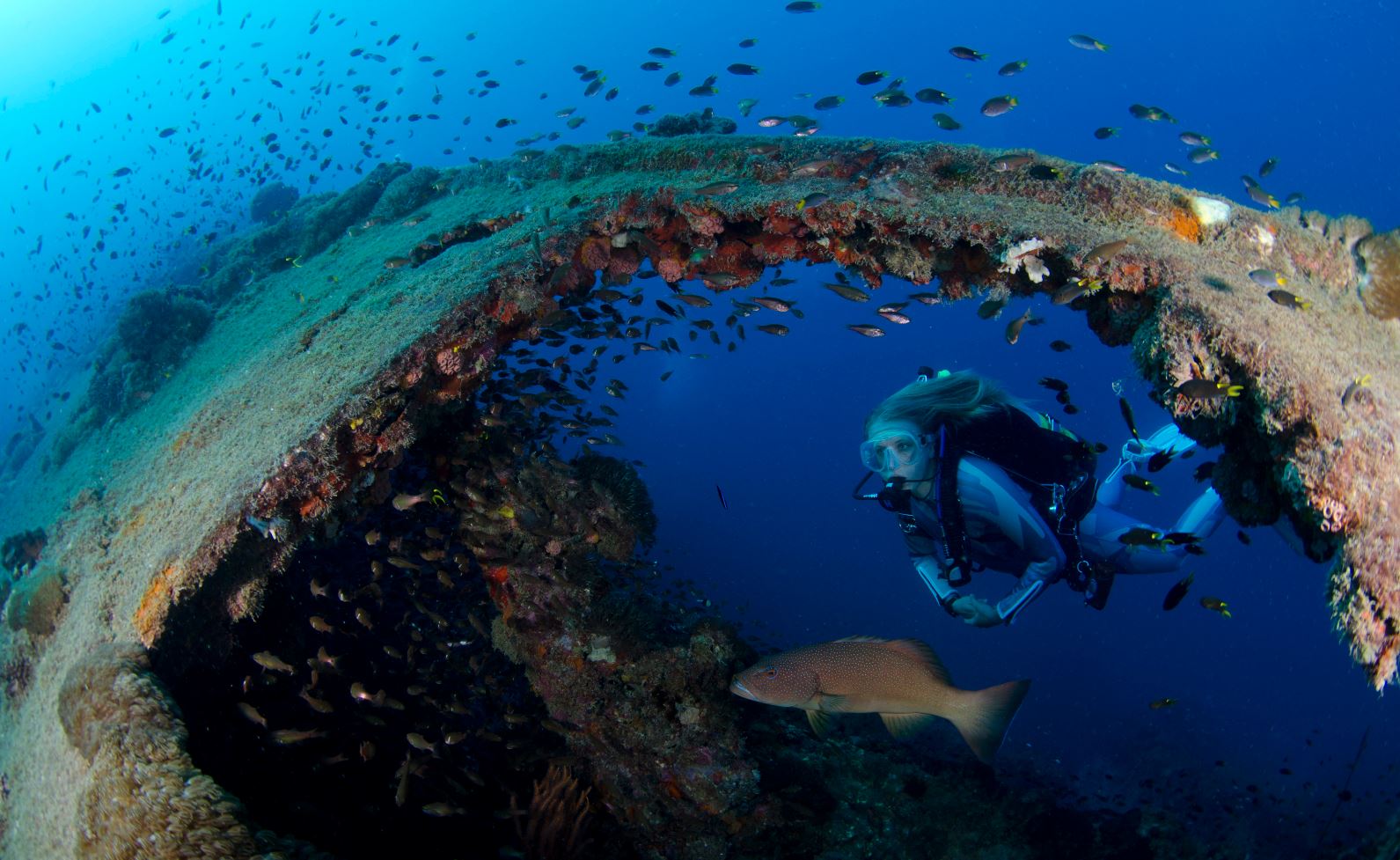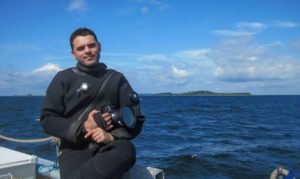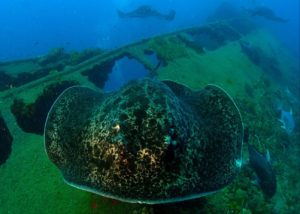
Capturing the power of underwater images will be highlighted during the Australasian Institute for Maritime Archaeology Conference at Flinders University.
Flinders University has one of the world’s leading research centres for maritime archaeology, with innovations including a powerful 3D computer modelling lab for teaching archaeology.
“This illustrates a big shift in the archaeology discipline within the past five years,” says Dr Jonathan Benjamin, Senior Lecturer in Maritime Archaeology, pointing to 3D printing, holograms and animations as an engaging new means of presenting underwater archaeological discoveries to the public. “This is a growing niche discipline that didn’t exist a decade ago.”

Accurate 3D reconstructions of submerged ships, structures and landscapes enable detailed examination of maritime archaeological finds without destroying the site.
“This is not treasure hunting,” says Dr Benjamin. “It’s not removing or selling what we find, but protecting and maintaining it. We record, analyse and publish information. The true treasure is the knowledge.”
A public lecture at Flinders at Victoria Square is among the pre-conference activities.
David Robinson from the University of Rhode Island will talk about working with indigenous Americans on underwater archaeological excavations, which has strong implications for future Australian research.
The lecture, at Flinders Victoria Square from 5.30pm on 21 September, will present evidence of submerged US indigenous tribal lands, and how David Robinson engaged with the area’s tribes, to teach them how to dive and do archaeological research on submerged ancestral lands.
Dr Benjamin believes the US research could be used as a model to actively involve Indigenous students in maritime archaeology research in Australia and be trained as scientific divers.
For example, this relates to Australian Research Council (ARC) work being done at Barrow Island in Western Australia to examine evidence of 50,000-year-old human habitation off the now-submerged Pilbara coast. (The significance of this work can be explored via the research team blog: deephistoryofseacountry.com – see Investigators Lecture below)
“The training of Indigenous students to become scientific divers and to eventually lead maritime archaeological projects is not being done yet, but it offers an exciting new opportunity in the future,” says Dr Benjamin. ” We should view indigenous and maritime archaeologies as seamless aspects of our shared human past, rather than divided into separate camps.”

The 2017 AIMA Conference (22-23 September) has the theme ‘Claimed by the Sea’, with the ‘Shared Histories’ photo competition asking for entries which underline the importance of submerged landscape in Australian archaeology, as nearly one-third of Australia’s landmass was drowned after the last ice age.
The competition embraces five categories: underwater wrecks, shipwrecks on the foreshore, maritime infrastructure, marine life inhabiting maritime structures, and archaeological remains of human interaction with the sea, lakes and rivers.
Winning entries in the photo competition will be displayed during the conference at Flinders University’s Bedford Park campus, together with winning photographs from the Department of Environment, Water and Natural Resources (DEWNR) 2017 SeaPixel photography competition.
More than 100 marine archaeology experts will attend the two-day conference, focusing on recent advances in underwater archaeological excavations which will help to plug knowledge gaps about early human migrations to Australia.
The conference is sponsored by AIMA, the State Heritage Unit of DEWNR and Flinders University. The conference marks 15 years of maritime archaeology at Flinders.
Flinders University marine archaeology experts, including Dr Benjamin and Flinders Associate Professor Wendy van Duivenvoorde (as Chair) who lead the UNESCO UNITWIN Network for Underwater Archaeology initiative at Flinders (2015-18), are involved in a new book, 3D Modelling and Interpretation for Underwater Archaeology, due out next year. The book will cover the merging discipline of 3D scanning and modelling of maritime archaeological discoveries around the world. The book’s principal editor is Flinders University PhD candidate John McCarthy, who is pioneering use of 3D and other technologies in underwater archaeology.
Dr Benjamin believes such advances will change the way underwater archaeology is viewed. “It’s not just about complex big vessels being discovered and researched, but also about the forgotten stories of maritime archaeology, which includes the the very first Australian communities who arrived by sea on landscapes that are now under water.
“This is a form of archaeology that has fallen through the cracks, and in Australia it has special relevance, to trace what happened before Europeans arrived in this country.
“It’s a completely unexplained part of history, and we need to act swiftly. Unique archaeological sites are eroding or being impacted by modern development and rapidly changing climate, so we must manage them before the non-renewable cultural resource is lost forever.”
Read his recent Journal of Maritime Archaeology (Springer) paper, Archaeology Hijacked: Addressing the Historical Misappropriations of Maritime and Underwater Archaeology, at the link
Hear more about the Deep History of Sea Country project – an ARC project involving University of WA, Flinders University, James Cook University and European collaborators – from Dr Jonathan Benjamin at the Flinders Investigators Lecture on Wednesday 18 October. The Investigators Lecture at Flinders at Victoria Square, 182 Victoria Square, Adelaide is open to the public from 5.30pm-6.45pm. All are welcome. Register here

